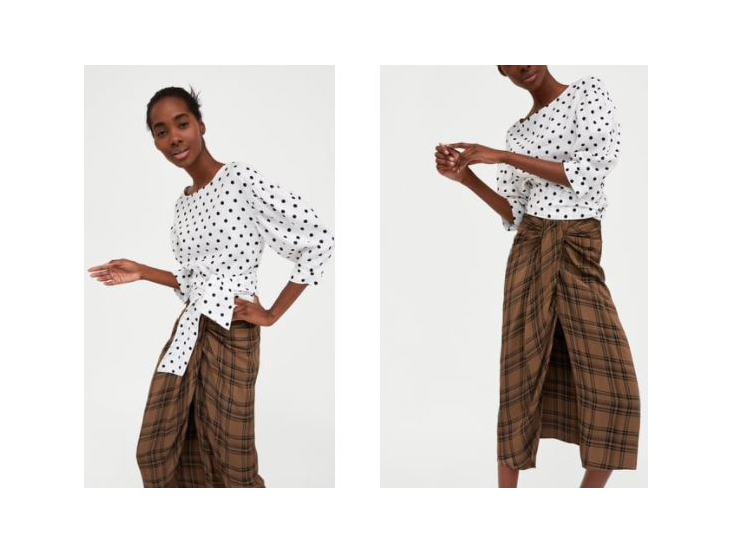Looks like fashion is at it again. A number of people have taken to Twitter to call out Zara for selling a skirt that’s an exact replica of a lungi, a traditional item of clothing worn in Southeast Asia, India and parts of Africa.

WATCH BELOW: Caught on camera: White student with dreadlocks confronted for ‘cultural appropriation’

Similar to a sarong, a lungi is a tube-shaped skirt (often in woven plaid or silk) that wraps around the waist and is open down the front. They’re most typically worn by men, although in some countries women wear them too, and they’re lauded for being light and cool — ideal for the hot, humid climates they’re popular in.
However, many observers feel that the price of Zara’s version adds insult to injury: where a lungi typically runs $4 in its native regions, the fast fashion retailer is selling it for $100.
The general consensus is less outrage than disbelief. Many find it ludicrous that the Spanish brand is selling “uncle’s lungi” and the “Thai grandpa’s uniform.”

Get breaking National news
https://twitter.com/strawbaby_whirl/status/958369690870603776
https://twitter.com/anchorkuki/status/959281392776503296
https://twitter.com/desifinesse/status/959184717882052609
https://twitter.com/cjohngeorge/status/958625187305525248
This is the second incident of appropriation in recent days. Earlier this week, designer Zuhair Murad was criticized for dubbing his spring 2018 couture show “Indian Summer,” and styling models with feathers in their hair. The set for the runway show was also decorated with tall, painted sticks that were arranged to resemble a teepee.
The Lebanese designer, whose creations are a mainstay on the red carpet and have been seen on the likes of Jennifer Lopez, Beyonce and Catherine Zeta Jones, admitted that his decision to reference Native Americans was “risky” but, he told Vogue, “I said to myself, I want to go beyond my limits this time; I want to do a challenge.”
READ MORE: What South Asians think of Asos calling a tikka a ‘chandelier head clip’
The feathers were perhaps the most glaring example of appropriation and one that people especially took issue with. In Native American culture, eagles feathers are a sacred symbol of freedom, wisdom, honour and strength.
“Most often people who engage in cultural appropriation use the ‘respect’ and ‘honour’ argument to justify their actions — ‘But I think Native culture is so beautiful!’ or ‘I’m honouring Native Americans!’” said Adrienne J. Keene, author of Native Appropriations, to Refinery29. “To me, there is no respect in taking designs or cultural markers from a community, divorcing them from their meaning and context, and selling them for monetary gain.”
Her sentiments were echoed by Waneek Horn-Miller, a Mohawk woman and brand ambassador for Manitobah Mukluks, who told Flare: “It’s a tricky topic, because ‘culture’ becomes somewhat fluid over time, when groups of people interconnect and borrow symbols from each other. The important questions to ask in relation to fashion are: when is a specific symbol considered sacred, and when does adoption of a symbol flippantly negate or revive a historical trauma?”










Comments